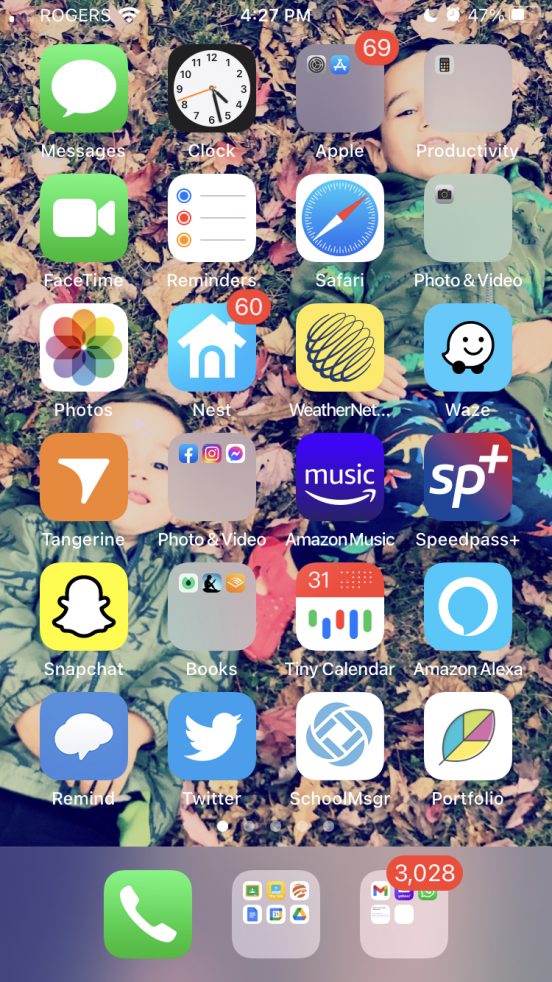For this task, I have taken the “What’s in my bag?” task essence and changed the semiotic mode from a visual mode to an audio-visual one, video. While thinking about the original purpose of the first task, which was about getting to know each other by the items that are found in your bag, I decided to keep the essence of the task, but redesign it. The New London Group (1996) explains that meaning-making is a dynamic process, and not something governed by static rules. As I looked at the image of “What’s in my bag?” I realized that there is very little to learn about me from the items that are in my bag. I have moved to a more digital/virtual space, and most of what I do can be accessed digitally, including my lesson plans, my agenda, and my grade book, it’s all digital. Then when thinking about redesigning task 1, and as Ernesto suggested in his feedback, “What’s in your phone?” would be a more appropriate task to get to know more about me.
I decided to create a video starting by describing the items in my bag, connecting the two tasks, and then provide a sneak peek at What’s in my phone. One of the benefits I found about engaging in mode-changing is that while in the first task, the mode is visual, an image, the reader can create the narrative. Whereas in the video, I can provide a frame to what I want to highlight, creating the narrative for the viewers. Nonetheless, as meaning-making is a dynamic process, and as The New London Group (1996) describes, there are different elements in the meaning-making process: linguistic, visual, audio, gestural, spatial, and multimodal patterns. Therefore as much as I redesign my task, and provide a framework to the meaning. The viewer can learn about me using all six elements, and not just based on what I am saying or highlighting. For example, someone can focus on the audio of my voice and learned that I have an accent, and start thinking about my cultural background. Focus on the apps that I don’t mention, and create a narrative and meaning, for example, based on the apps I have about food, what narrative would the viewer create? “Uber eats”, “Skip the dishes”, “PizzaPizza”, “Prepear”, “Tim Hortons”, “Starbucks”, “Tasty”. Making meaning based on the spatial organization of my apps, or the fact that I have more than 3000 unread emails, what narratives and meaning-making can be created?
References
The New London Group. (1996). A pedagogy of multiliteracies: Designing social futures. Harvard Educational Review 66(1), 60-92.

James Seaton
April 2, 2021 — 2:09 pm
Hi Adriana,
I ended up doing something very similar, making a video looking at what’s included on my phone and what it says about me. Unfortunately, I can’t seem to find your video. Is it included somewhere in the post?